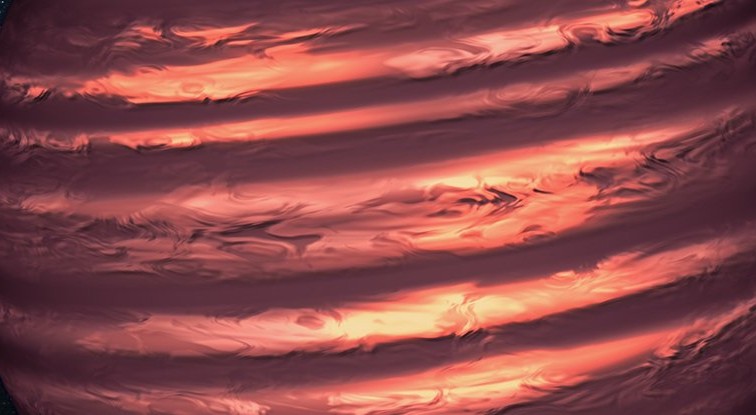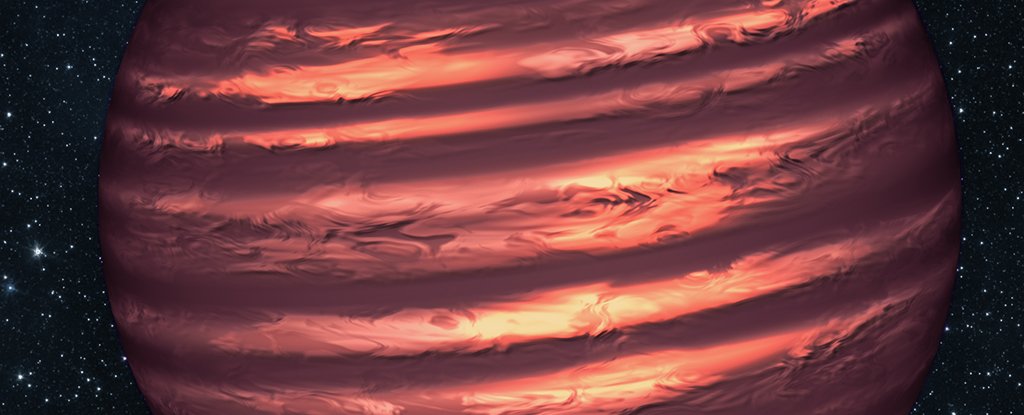Alien life could be found in the clouds of failed stars, according to scientists

If we're going to one day find life beyond Earth, then we need to know where to look, and scientists have identified another potential habitat where aliens could be lurking.
That habitat is the upper atmosphere of cold brown dwarfs — massive stellar objects that are somewhere between planets and stars in size, but without enough mass to kickstart a nuclear reaction.
According to calculations from researchers at the University of Edinburgh in the UK, the pressures and temperatures found in the upper atmosphere of a brown dwarf could be similar to those on Earth, and therefore could allow microbes to grow.
"You don't necessarily need to have a terrestrial planet with a surface," planetary scientist Jack Yates told Joshua Sokol at Science.
These brown dwarfs are made up solely of swirling gas, and Yates and his team investigated one such object called WISE 0855-0714. This brown dwarf was discovered in March 2013 and is located around 7 light-years away from Earth.
The team used calculations developed by noted astronomer Carl Sagan, which were originally intended to work out the possibility of life on Jupiter, and adapted them to fit what we know about giant gas clouds like WISE 0855-0714.
Sagan imagined plankton-like organisms called "sinkers" and balloon-like creatures called "floaters" living in the atmosphere of Jupiter.
Per Sagan's original hypothesis, these creatures wouldn't require any hard ground to survive, and Yates thinks such organisms could flourish on brown dwarfs too, living between the hot gases lower down and the freezing outer layers close to space.
The researchers also took into account studies of plankton living on Earth, to figure out whether similar forms of life in space would be able to survive on a brown dwarf.
"We argue that an atmosphere sitting above a potentially uninhabitable planetary surface may be cool enough to sustain life," the researchers explain in their paper. "By doing this, we define an atmospheric habitable zone (AHZ)."
Ultimately, a lot could depend on whether these failed stars have the same types of uplifting winds as Jupiter and Saturn appear to, which would be necessary to help keep heavier microorganisms aloft.
But based on past observations, the scientists think a lot of the chemical ingredients for life are already present, including carbon, hydrogen, nitrogen, and oxygen.
Temperature is another important factor, and WISE 0855-0714 was chosen because it's the coolest brown dwarf we've found so far — in places, it could be the same mild temperature as Earth.
The researchers estimate as many as 1 billion brown dwarfs might be present in our own Milky Way, and some of them are relatively close by, as far as space goes (within 10 parsecs or 32 light-years, which is about 300 trillion kilometres).
That means we could have a lot more places to look for alien life in the near future, and NASA's James Webb Space Telescope should be able to help us identify more cold brown dwarfs over the next decade.
Obviously, the idea remains squarely hypothetical for now, but if the researchers are right, it might be time to abandon the idea of lifeforms needing solid ground and water to survive.
But UK astrobiologist Duncan Forgan from the University of St Andrews, who was not a part of the study, says questions still need to be answered about how such life would be sparked in the first place.
"Having little microbes that float in and out of a brown dwarf atmosphere is great," he told Science. "But you’ve got to get them there first."
It's possible organisms could result from chemical reactions on dust grains floating in the atmosphere, or life could be carried into the cloud from a passing asteroid.
We don't have the answers to this kind of speculation right now, but it's the questions themselves that make the research so promising, Forgan thinks.
"It really opens up the field in terms of the number of objects that we might then think, well, these are habitable regions," he told Science.
Политика конфиденциальности | Правила пользования сайтом








